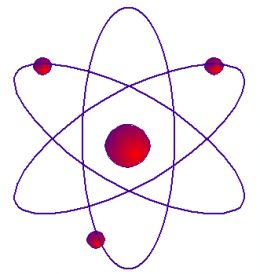Researchers Develop Circuit That Runs Without a Battery
A team of researchers from Virginia Commonwealth University claim to have created the a circuit that requires so little energy that it does not need any batteries.

The design is able to power itself by energy that is harvested from the surrounding environment. According to a paper published in Applied Physics Letters, the circuit could lead the path to an "extremely low-power, yet high-density, non-volatile magnetic logic and memory system."
Rather than the traditional charge-based electronic switches that encode the basic 0s and 1s in computers, the researchers are leveraging the potential of spintronics and straintronics for their circuit. In spintronics, they use the natural spin of electrons to store bits of data. If they are spun one way, they store a 1, if they are spun in the other direction, they write a 1. A spin in a different direction is typically achieved by applying a magnetic field or a spin-polarized current pulse.
"During switching, spintronics uses considerably less energy than charge-based electronics," the researchers said. "However, when ramped up to usable processing speeds, much of that energy savings is lost in the mechanism through which the energy from the outside world is transferred to the magnet." To avoid this effect, the researchers propose to use a special class of composite structure called multiferroics, which includes a layer of piezoelectric material with intimate contact to a magnetostrictive nanomagnet that that changes shape in response to strain.
Electricity can generate such strain which will cause a change in the direction of magnetism, causing the electrons to spin in the opposite direction. The researchers believe that dissipated energy in this process can be as low as 0.4 attojoules, or about a billionth of a billionth of a joule. While there is no commercial product in sight that could use this technology, the researchers paint a vision of processors that "would be well suited for implantable medical devices and could run on energy harvested from the patient's body motion."
Get Tom's Hardware's best news and in-depth reviews, straight to your inbox.

Douglas Perry was a freelance writer for Tom's Hardware covering semiconductors, storage technology, quantum computing, and processor power delivery. He has authored several books and is currently an editor for The Oregonian/OregonLive.
-
CaedenV If they are spun one way, they store a 1, if they are spun in the other direction, they write a 1.Well hell... that's not going to work very wellReply
-
Goro caedenvIf they are spun one way, they store a 1, if they are spun in the other direction, they write a 1.Well hell... that's not going to work very wellReply
yea, same here... -
gokanis With that they can make a computer the size of the Earth at low wattage and it will produce the answer 42... Now where did I put the question I had written down?Reply -
jdwii Replyanother few years of investigation and this can become really good
Maybe in 100 years if are government does not stop it saying we could take out the electric company's like they like to do about the energy efficient engines or energy efficient car's -
dogman_1234 Like I always say:Reply
Carbon Nanotubes
Graphene
Magnetic switches
This
Memristors...
the list goes on to what applications e can use to create the coputationsl devices of computers.
Oh, I forgot IBM's brain-in-a-chip as well.